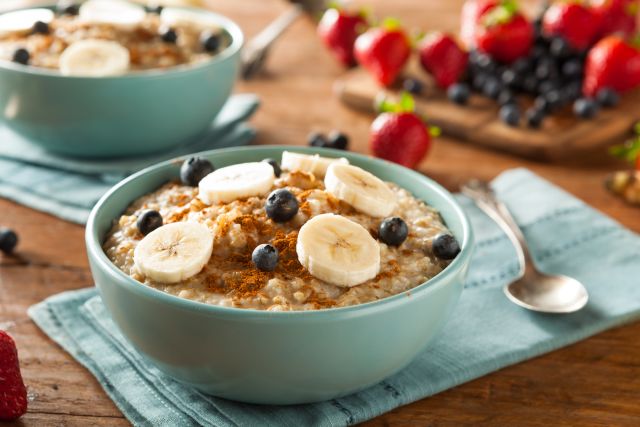Updated on May 27, 2022.
Did you know that adding more whole grains to an overall healthy diet could slash your chances of developing type 2 diabetes? While it’s not 100 percent guaranteed for all people, one 2020 study published in BMJ found that eating oatmeal for breakfast could help.
In the study, researchers combined and analyzed data from three other studies. Results showed that eating two or more servings per week of oatmeal over the course of 24 years, on average, was associated with 21 percent lower risk of type 2 diabetes, compared with eating less than one serving per month.
A soluble solution
Soluble fiber—a type of fiber found in abundance in oatmeal and other whole grains—helps put your blood sugar level readings where they need to be. That’s in part a result of the way the fiber is digested slowly, which translates into a slower and gentler blood sugar response. Just make sure not to load your morning oatmeal with sugar and saturated fat, which can hamper some of the benefits of the fiber.
While you’re shopping for your new favorite breakfast food, consider giving preference to steel-cut oats. These have been processed the least and retain the most fiber and nutrients. Old-fashioned rolled oats are a good second choice.
Instant oatmeal, on the other hand, is not nearly as beneficial. A single serving may contain as few as 2 grams of fiber, compared to the 10 grams or more in a single serving of steel-cut oats
Ingrained goodness
If you’re not an oatmeal fan, that’s okay: Other whole-grain foods might help ward off type 2 diabetes, too.
The BMJ study found that people who ate one or more servings per day of whole grains like dark bread, brown rice, or bran were 29 percent less likely to develop type 2 diabetes, compared to those who ate less than one serving per month.
But more than that was not necessarily better, so don’t feel like you have to crowd other healthy foods (like fruits, vegetables, and lean proteins) off you plate in favor of whole grains. The reduction in diabetes risk seemed to level off at about two servings of whole grains per day.
What’s the whole-grain secret?
Not only are whole-grain foods crammed with fiber, they’re also often rich in B vitamins and a variety of minerals, including selenium, magnesium, potassium, phosphorous, manganese, iron, and zinc. This potent combination of nutrients helps regulate blood sugar and insulin, curb appetite, control cholesterol, and lower homocysteine, a substance strongly linked with heart disease, according to a 2022 review of research published in the Journal of Thoracic Disease. No wonder nutritionists have been chanting the whole-grain mantra for years.
If you're even remotely at risk for diabetes, aim for meeting the USDA-recommended amount of getting at least half your daily grains from whole grains. Recipes containing whole grains are much more nutritious and fiber-rich than those with processed white-flour products. Best news of all: There are lots of easy ways to sneak whole grains into your diet.







